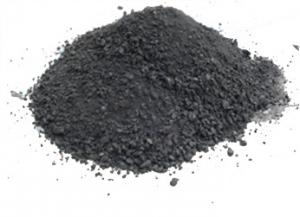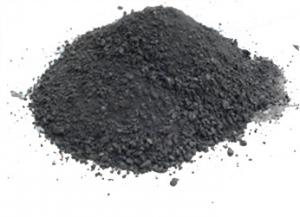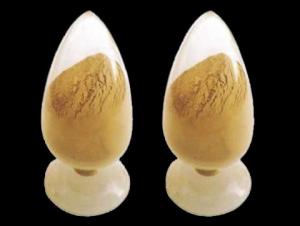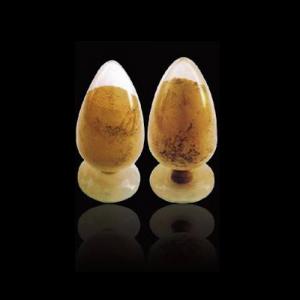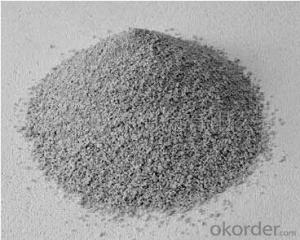GUNNING MASS REFRACTORY MATERIAL FOR METALLURGY
- Loading Port:
- Shanghai
- Payment Terms:
- TT or LC
- Min Order Qty:
- 20000 kg
- Supply Capability:
- 100000000 kg/month
OKorder Service Pledge
OKorder Financial Service
You Might Also Like
General Information of Gunning Mass
Gunning mass refractories is product that is used in various part of furnace as Monolithic Refractories that added hydraulic alumina cement to refractory aggregate.
Our Company is producing suitable product to installation and working condition through a quality control, this product which is minimizing alumina cement for using various dispersants and ultra fine powder so it has excellent abrasion resistance, erosion resistance, spalling resistance and chemical resistance . It widely used in part of various industrial furnace including incinerator, nonferrous metal furnace etc.
Features of Gunning Mass
High refractoriness, High refractoriness under load
High density, low porosity
Good slag resistance and corrosion resistance
High strength and wear resistance
Good resistance to flake performance
Good thermal shock stability
Scouring resistance
Good hot strength
Technical Data Sheet of Gunning Mass
CA-190 | CA-185 | CA-180 | CA-175 | CA-170 | CA-165 | CA-160 | CA-155 | CA-150 | CA-140 | |||
Properties | ||||||||||||
Application Limit Temp | 1,800 | 1,800 | 1,750 | 1,700 | 1,700 | 1,650 | 1,600 | 1,550 | 1,500 | 1,400 | ||
Bulk Density (g/cm3) | 2.9 | 2.85 | 2.8 | 2.6 | 2.5 | 2.3 | 2.15 | 2.1 | 2.1 | 2 | ||
Water Required for Casting(%) | 9-10 | 9-10 | 11-12 | 11-12 | 10-13 | 11-14 | 12-15 | 13-16 | 13-16 | 13-17 | ||
CCS/MOR | 110ºCx24h | 55(9) | 30(6) | 30(6) | 30(6) | 25(5) | 25(5) | 20(4) | 20(4.5) | 25(5) | 20(5) | |
1,200ºCx3h | 50(8) | 35(7) | 35(7) | 30(7) | 20(4) | 17(3.5) | 15(3.5) | 15(2.5) | 17(4) | 14(3) | ||
1,400ºCx3h | 60(10) | 50(8) | 60(10) | 60(10) | 50(12) | 45(8) | 40(7) | 40(7) | 32(7.5) | - | ||
Permanent Linear Change(%) | 110ºCx24h | -0.03 | -0.03 | -0.06 | -0.06 | -0.06 | -0.06 | -0.06 | -0.06 | -0.06 | -0.06 | |
1,200ºCx3h | -0.1 | -0.1 | -0.15 | -0.15 | -0.2 | -0.2 | -0.16 | -0.3 | -0.25 | -0.3 | ||
1,400ºCx3h | -0.2 | -0.2 | -1 | -1 | -0.8 | -1 | -1 | -0.7 | - | - | ||
Thermal conductivity(W/m.k) | 400ºC | 0.95 | 0.95 | 0.92 | 0.92 | 0.8 | 0.72 | 0.68 | 0.68 | 0.65 | 0.6 | |
1,000ºC | 1.1 | 1.05 | 1.02 | 1.02 | 0.9 | 0.85 | 0.88 | 0.8 | 0.76 | 0.71 | ||
Chemical Analysis(%) | Al2O3 | 92 | 88 | 82 | 75 | 62 | 55 | 50 | 47 | 44 | 35 | |
SiO2 | - | - | 10 | 10 | 29 | 40 | 43 | 45 | 50 | 55 | ||
Photo of Gunning Mass

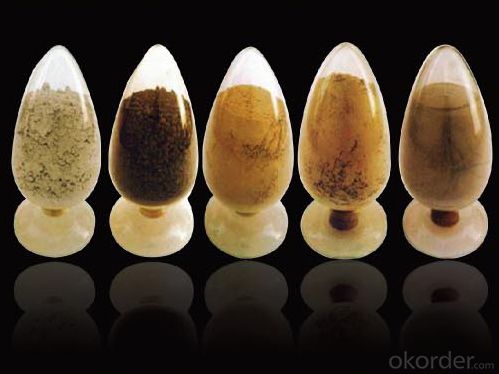
- Q:How do monolithic refractories contribute to the overall efficiency of steel ladle operations?
- Monolithic refractories play a crucial role in enhancing the overall efficiency of steel ladle operations. They provide a protective lining that withstands extreme temperatures, chemical reactions, and mechanical stresses during the steelmaking process. This lining helps to retain heat and prevent heat loss, ensuring better temperature control and reducing energy consumption. Additionally, monolithic refractories minimize metal penetration and slag adhesion, improving ladle cleanliness and reducing the risk of clogging or blockages. Overall, the use of monolithic refractories in steel ladles promotes higher productivity, improved steel quality, and cost-effective operations.
- Q:How do monolithic refractories resist chemical attacks from molten metals and slag?
- Monolithic refractories are engineered to withstand chemical attacks caused by molten metals and slag. They possess various essential qualities that enable them to endure such harsh conditions. To begin with, monolithic refractories comprise top-notch materials with exceptional chemical resistance. These materials, including alumina, magnesia, and chrome, have a high melting point and remain stable even when exposed to extreme temperatures and corrosive substances. This chemical stability ensures that the refractory maintains its integrity and structural strength when in contact with molten metals and slag. Moreover, monolithic refractories have a compact and dense structure. This microstructure serves as a barrier, preventing molten metals and slag from penetrating the refractory material. By limiting the contact between the corrosive substances and the refractory, the dense structure reduces the likelihood of chemical reactions and erosion, thereby enhancing the refractory's resistance to chemical attacks. Additionally, monolithic refractories often contain additives and binders that enhance their chemical resistance. These additives form a protective layer on the refractory surface, acting as a shield against chemical attacks. They can also react with certain corrosive substances, forming stable compounds that further inhibit the penetration and corrosion of the refractory material. Furthermore, monolithic refractories are designed to have minimal porosity. This low porosity minimizes the absorption of molten metals and slag, preventing them from infiltrating the refractory and causing damage. By reducing the permeability of the material, the refractory can maintain its structural integrity and resist chemical attacks for extended periods. In conclusion, monolithic refractories withstand chemical attacks from molten metals and slag due to their high-quality materials, dense structure, additives, and low porosity. These combined properties enable the refractories to endure aggressive environments and maintain their performance and longevity in industrial applications.
- Q:How do monolithic refractories resist chemical attack from molten metals and slags?
- Monolithic refractories resist chemical attack from molten metals and slags due to their chemical composition and structure. They are typically designed with high levels of resistance to corrosion and erosion, making them suitable for harsh environments. Additionally, they have low porosity, which reduces the penetration of molten metals and slags into the refractory material. The presence of certain additives and bonding agents further enhances their chemical resistance, preventing reactions between the refractory and the molten substances. Overall, monolithic refractories offer a strong barrier against chemical attack, ensuring their durability and longevity in such demanding conditions.
- Q:How do monolithic refractories withstand the thermal cycling in aluminum smelting applications?
- Monolithic refractories have been specifically developed to endure the extreme thermal cycling conditions that arise in aluminum smelting applications. The exceptional properties of these refractories enable them to withstand the rapid and repetitive heating and cooling cycles without experiencing significant damage or failure. A key characteristic of monolithic refractories is their remarkable thermal shock resistance, which allows them to withstand sudden temperature changes without cracking or spalling. Throughout the aluminum smelting process, the refractories are exposed to extreme temperatures when molten aluminum is poured into the molds or when the molten metal comes into contact with the refractory lining. It is essential for the refractories to quickly absorb and dissipate heat to prevent any thermal shock damage. Furthermore, monolithic refractories possess a high thermal conductivity, which facilitates the efficient transfer of heat away from the refractory lining. This effectively reduces the risk of thermal stress and thermal fatigue. By dispersing the heat generated during the smelting process, the refractories minimize temperature variations within the lining, thereby preventing the occurrence of cracks or fractures. Moreover, monolithic refractories exhibit excellent chemical resistance, a crucial characteristic in aluminum smelting applications. These refractories are formulated to resist the corrosive effects of molten aluminum and other chemicals present in the smelting process. By offering resistance to chemical corrosion, the refractories help maintain the integrity of the refractory lining and extend its service life. Additionally, monolithic refractories are often reinforced with fibers or other structural materials to enhance their mechanical strength and durability. These reinforcements provide added resistance against mechanical stresses, such as thermal expansion and contraction, which arise during the thermal cycling process. In conclusion, the purpose of monolithic refractories is to withstand the thermal cycling conditions encountered in aluminum smelting applications. Their exceptional thermal shock resistance, high thermal conductivity, excellent chemical resistance, and enhanced mechanical strength enable them to endure extreme temperature fluctuations without experiencing significant damage. These refractories play a crucial role in maintaining the integrity and efficiency of the smelting process in the aluminum industry.
- Q:What are the advantages of using monolithic refractories in the iron and steel industry?
- There are several advantages of using monolithic refractories in the iron and steel industry. Firstly, monolithic refractories offer excellent thermal insulation properties. This means that they are able to withstand and retain high temperatures, which is crucial in the iron and steel manufacturing process. The ability to withstand extreme heat ensures that the refractories maintain their structural integrity, reducing the risk of failure and maintaining operational efficiency. Secondly, monolithic refractories have superior corrosion resistance. In the iron and steel industry, where materials are exposed to harsh chemicals and corrosive agents, the use of monolithic refractories helps to protect the equipment and structures from degradation. This not only extends the lifespan of the refractories but also reduces maintenance costs and downtime. Another advantage of monolithic refractories is their versatility. Unlike traditional refractory bricks, which are rigid and require skilled labor for installation, monolithic refractories can be cast or sprayed into various shapes and sizes. This flexibility allows for easier installation and customization, resulting in better lining design and improved performance. Additionally, monolithic refractories can be easily repaired or patched in case of damage, minimizing production disruptions. Furthermore, monolithic refractories have excellent mechanical strength and abrasion resistance. In the iron and steel industry, where materials are constantly being moved and processed, the refractories must be able to withstand mechanical stresses and abrasion. Monolithic refractories provide the necessary strength and resistance, ensuring that they can withstand the rigors of the industry without compromising performance. Lastly, the use of monolithic refractories in the iron and steel industry can lead to cost savings. Due to their versatility and ease of installation, monolithic refractories require less labor and time for installation, resulting in reduced installation costs. Additionally, their longer lifespan and resistance to corrosion and thermal shock minimize the need for frequent replacements, reducing maintenance and downtime costs. In conclusion, the advantages of using monolithic refractories in the iron and steel industry include excellent thermal insulation, corrosion resistance, versatility, mechanical strength, and cost savings. These benefits make monolithic refractories an ideal choice for lining furnaces, ladles, and other equipment used in the production of iron and steel.
- Q:How do monolithic refractories enhance the performance of ladle and tundish purging systems?
- Monolithic refractories enhance the performance of ladle and tundish purging systems by providing high thermal insulation, excellent erosion resistance, and increased durability. These refractories help maintain the desired temperature in the ladle and tundish, ensuring optimal conditions for purging operations. Additionally, their erosion resistance properties prevent excessive wear and tear, extending the lifespan of the purging systems. Overall, monolithic refractories play a crucial role in enhancing the efficiency and effectiveness of ladle and tundish purging systems.
- Q:What are the key considerations when selecting monolithic refractories for tundish applications?
- When choosing monolithic refractories for tundish applications, there are several important factors to take into account. Firstly, it is crucial to consider the refractory material's ability to withstand thermal shocks. Tundishes experience drastic changes in temperature as molten metal is poured in and drained out. If the refractory material is not resistant to thermal shocks, it will deteriorate quickly and fail, resulting in expensive repairs and downtime. Another important factor is the material's resistance to chemical attacks. Tundishes often come into contact with aggressive chemical environments due to the presence of molten metal and various slag compositions. The refractory material must be capable of enduring these corrosive elements and maintaining its integrity over time. Furthermore, the mechanical strength of the refractory material is essential. Tundishes are subjected to physical stresses, including the weight of the molten metal and the movement of the tundish itself. A weak refractory material is prone to cracking and failure, which can compromise the overall performance and lifespan of the tundish. The ease of installation and repair should also be taken into consideration. Monolithic refractories are typically cast or gunned in place, so it is important to select a material that can be easily applied and shaped to fit the tundish design. Additionally, if repairs are required, the refractory material should allow for patching or replacement without causing significant disruptions to operations. Lastly, cost is always a factor to consider. While it is important to choose a high-quality refractory material that meets the specific requirements of the tundish, the overall cost-effectiveness must be evaluated. This includes considering the initial material cost, installation and repair expenses, and the expected lifespan of the refractory. To summarize, the key considerations when selecting monolithic refractories for tundish applications are thermal shock resistance, chemical resistance, mechanical strength, ease of installation and repair, and cost-effectiveness. By carefully assessing these factors, one can choose a refractory material that will deliver optimal performance and durability in tundish applications.
- Q:What are the factors influencing the choice of monolithic refractories for different furnace types?
- There are several factors that influence the choice of monolithic refractories for different furnace types. Firstly, the operating temperature of the furnace is a crucial factor as different monolithic refractories have different temperature resistance levels. Secondly, the type of material being processed in the furnace is important as certain materials may require specific refractories to withstand their corrosive or abrasive nature. Thirdly, the furnace design and its heating method also play a role in determining the suitable refractory material. Additionally, the thermal conductivity, thermal shock resistance, and mechanical strength of the refractory are considered to ensure optimal performance and durability. Finally, cost, availability, and installation requirements are factors that can influence the choice of monolithic refractories for different furnace types.
- Q:What are the key properties and characteristics of monolithic refractories?
- Monolithic refractories are a type of refractory material that are known for their ability to be shaped or installed in a single piece or without joints. These materials are typically used in high-temperature applications where traditional brick or tile refractories may not be suitable. One key property of monolithic refractories is their excellent thermal stability. They can withstand extreme temperatures without undergoing significant expansion or contraction, making them ideal for use in furnaces, kilns, and other heat-intensive environments. This property allows monolithic refractories to maintain their structural integrity and provide long-lasting performance. Another important characteristic of monolithic refractories is their high resistance to thermal shock. They can withstand rapid temperature changes without cracking or spalling, which is crucial in applications where the refractory material is exposed to alternating hot and cold conditions. This resistance to thermal shock ensures the longevity of the refractory lining and reduces the need for frequent repairs or replacements. Monolithic refractories also exhibit good mechanical strength, which enables them to withstand the mechanical stresses and loads imposed on them during use. They possess excellent load-bearing capacity and can resist abrasion, erosion, and impact, making them suitable for applications where the refractory material is subjected to mechanical wear or impact. Furthermore, monolithic refractories have the advantage of being easily installed and repaired. Unlike traditional refractories that require skilled labor and time-consuming bricklaying techniques, monolithic refractories can be cast, gunned, or sprayed into place. This ease of installation allows for faster turnaround times and reduces downtime during repairs or maintenance. Lastly, monolithic refractories offer good chemical resistance to various corrosive agents, such as acids, alkalis, and molten metals. This property makes them suitable for use in industries where the refractory material is exposed to aggressive chemical environments, such as the steel, petrochemical, and glass industries. In summary, the key properties and characteristics of monolithic refractories include excellent thermal stability, high resistance to thermal shock, good mechanical strength, easy installation and repair, and good chemical resistance. These properties make them a preferred choice in high-temperature applications where durability, reliability, and performance are of utmost importance.
- Q:What are the key properties of shotcrete mixes used for monolithic refractory applications?
- The key properties of shotcrete mixes used for monolithic refractory applications include high strength, low porosity, high abrasion resistance, good thermal shock resistance, and excellent adhesion to the substrate. These properties ensure the durability and effectiveness of the shotcrete in withstanding high temperatures and harsh conditions in refractory applications.
1. Manufacturer Overview |
|
|---|---|
| Location | |
| Year Established | |
| Annual Output Value | |
| Main Markets | |
| Company Certifications | |
2. Manufacturer Certificates |
|
|---|---|
| a) Certification Name | |
| Range | |
| Reference | |
| Validity Period | |
3. Manufacturer Capability |
|
|---|---|
| a)Trade Capacity | |
| Nearest Port | |
| Export Percentage | |
| No.of Employees in Trade Department | |
| Language Spoken: | |
| b)Factory Information | |
| Factory Size: | |
| No. of Production Lines | |
| Contract Manufacturing | |
| Product Price Range | |
Send your message to us
GUNNING MASS REFRACTORY MATERIAL FOR METALLURGY
- Loading Port:
- Shanghai
- Payment Terms:
- TT or LC
- Min Order Qty:
- 20000 kg
- Supply Capability:
- 100000000 kg/month
OKorder Service Pledge
OKorder Financial Service
Similar products
New products
Hot products
Related keywords
